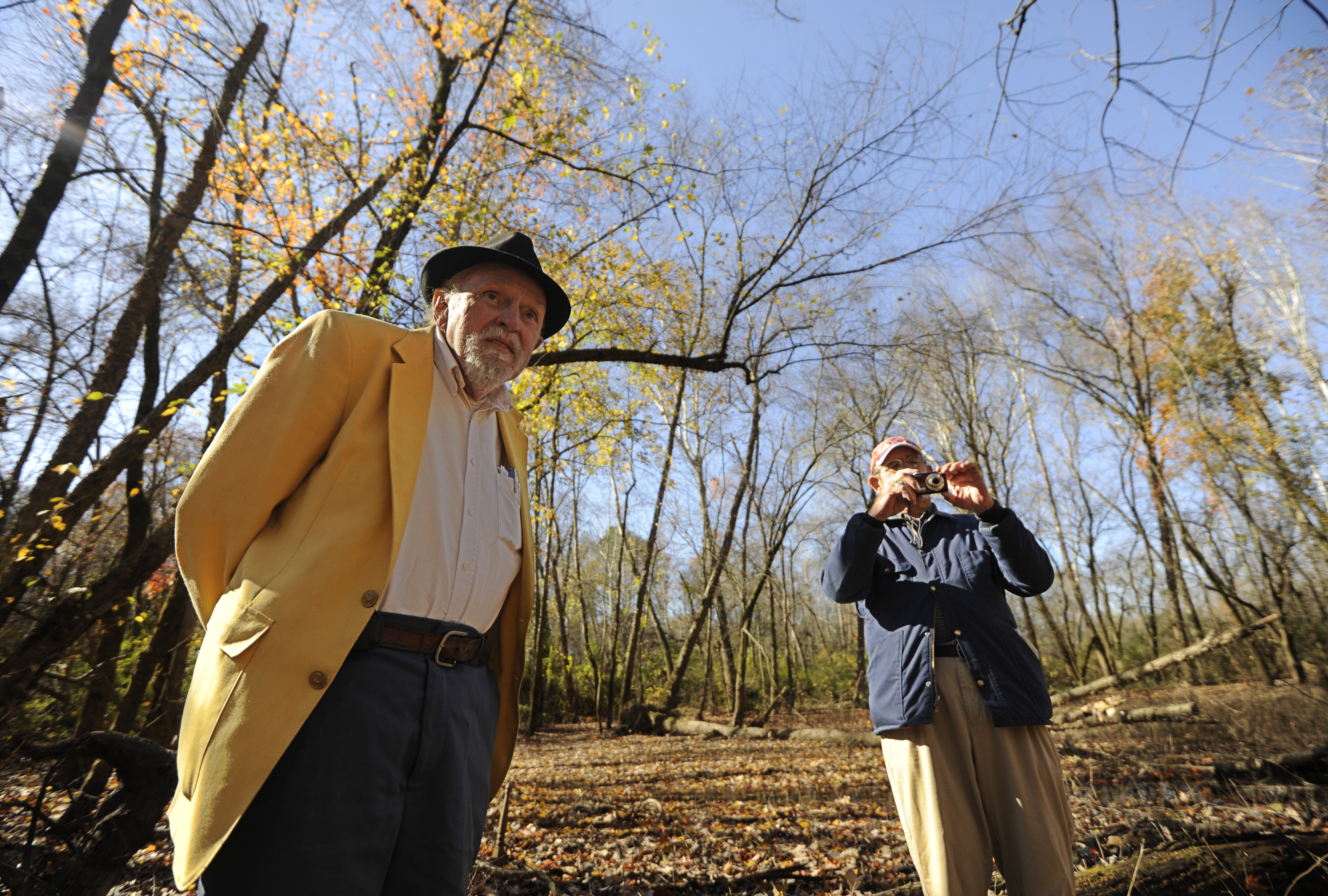Most hikers trekking through a span of scrubby woods on a remote edge of Camp Jordan would not notice the long, steep bank that rises from a wide clearing on West Chickamauga Creek.
But Raymond Evans can visualize tents pitched inside the space created by those earthen walls. He can picture Union troops struggling to keep warm in the winter of 1863, training and gathering supplies for a southward march in spring.
Evans -- a local anthropologist and researcher who has written more than 30 books on the Civil War -- believes the banks are Union-made military barriers called "earthworks."
And he thinks the earthworks made up a large fort system -- technically known as a "redoubt" -- occupied by a regiment of Union Gen. William T. Sherman's troops in the months after the army's victory at the Battle of Missionary Ridge.
"We don't have a brass disc saying 'Sherman's troops camped here,' but insofar as we have evidence of what these earthworks looked like, this fits the description," Evans said last week as he walked through the woods. "Gen. Sherman was amassing large quantities of troops and equipment in this area, so this makes sense."
Evans learned of the site three years ago from local Chuck Hamilton, who was hiking in the area when he noticed the strange terrain. Ranging from three to 10 feet tall, the bank enfolds the perimeter of a small peninsula bordered by West and South Chickamauga creeks and Spring Creek.
The fact that the walls join at right angles is a strong indicator they are manmade, said Evans.
Jim Ogden, historian at Chickamauga and Chattanooga National Military Park, has not visited the site yet and is hesitant to call it an encampment until other indicators such as relics from the Civil War era are found there.
"It is possible [the site] was associated with some of the Union occupation of the Chattanooga area," he said. "With so many soldiers camped around here, you can't necessarily rule out anything as a possibility."
As many as 70,000 Union troops camped in the area after the battles in Chattanooga, setting up winter quarters from Knoxville to Scottsboro, Ala.
Ogden said he gets one or two calls a year from people who believe they have come across Civil War earthworks, but most don't pan out.
But some do. Civil War earthworks of varying size and purpose have been found throughout Moccasin Bend, Lookout Mountain, Missionary Ridge and elsewhere, said Ogden. One earthen fort, called the Tyner Redoubt, stands in a patch of woods at the corner of Bonny Oaks Drive and Hickory Valley Road, he said.
And almost 150 years after a series of battles were fought here, there are still Civil War sites to be discovered -- or rediscovered, Ogden said.
"Some areas have not been investigated yet. In some cases, the sites were once known by a number of people -- but then they were forgotten," said Ogden. "So it's really a matter of making a record of them."
Because the site is on East Ridge property, officials are keeping it under close scrutiny to protect it from relic hunters, and they are hoping additional historians and archaeologists will look at the site.
"If we do the proper studies to verify that this is a historic site, it has great possibilities for preservation and interpretation," said Mayor Brent Lambert, who commissioned Evans to write a book about the Civil War in East Ridge. "We haven't been as proactive in finding out about our history and preserving our history as I think we probably need to be."
